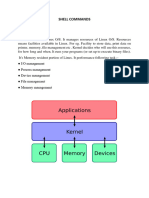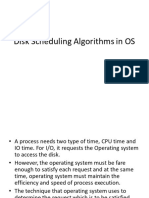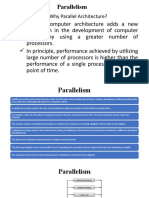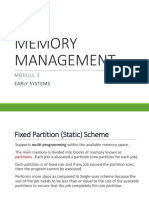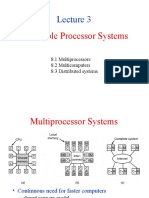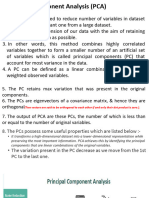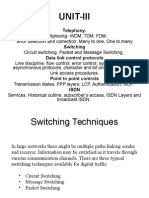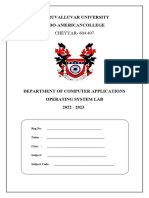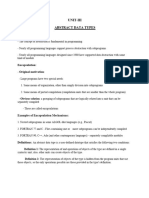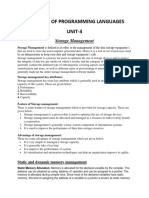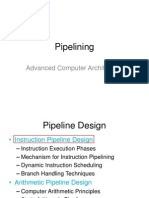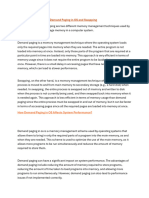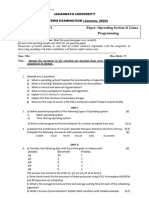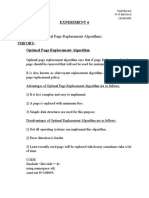0% found this document useful (0 votes)
284 views6 pagesDemand Paging in Operating System
Demand paging is a memory management technique in operating systems that loads only the necessary parts of a program into memory when needed, improving memory usage and system performance. It involves handling page faults, where the operating system retrieves required pages from secondary storage, and can lead to issues like thrashing if not managed properly. While it allows for efficient use of physical memory and supports larger programs, it can also introduce performance overhead and complexity.
Uploaded by
Kalaivani GopalramCopyright
© © All Rights Reserved
We take content rights seriously. If you suspect this is your content, claim it here.
Available Formats
Download as DOCX, PDF, TXT or read online on Scribd
0% found this document useful (0 votes)
284 views6 pagesDemand Paging in Operating System
Demand paging is a memory management technique in operating systems that loads only the necessary parts of a program into memory when needed, improving memory usage and system performance. It involves handling page faults, where the operating system retrieves required pages from secondary storage, and can lead to issues like thrashing if not managed properly. While it allows for efficient use of physical memory and supports larger programs, it can also introduce performance overhead and complexity.
Uploaded by
Kalaivani GopalramCopyright
© © All Rights Reserved
We take content rights seriously. If you suspect this is your content, claim it here.
Available Formats
Download as DOCX, PDF, TXT or read online on Scribd
/ 6







